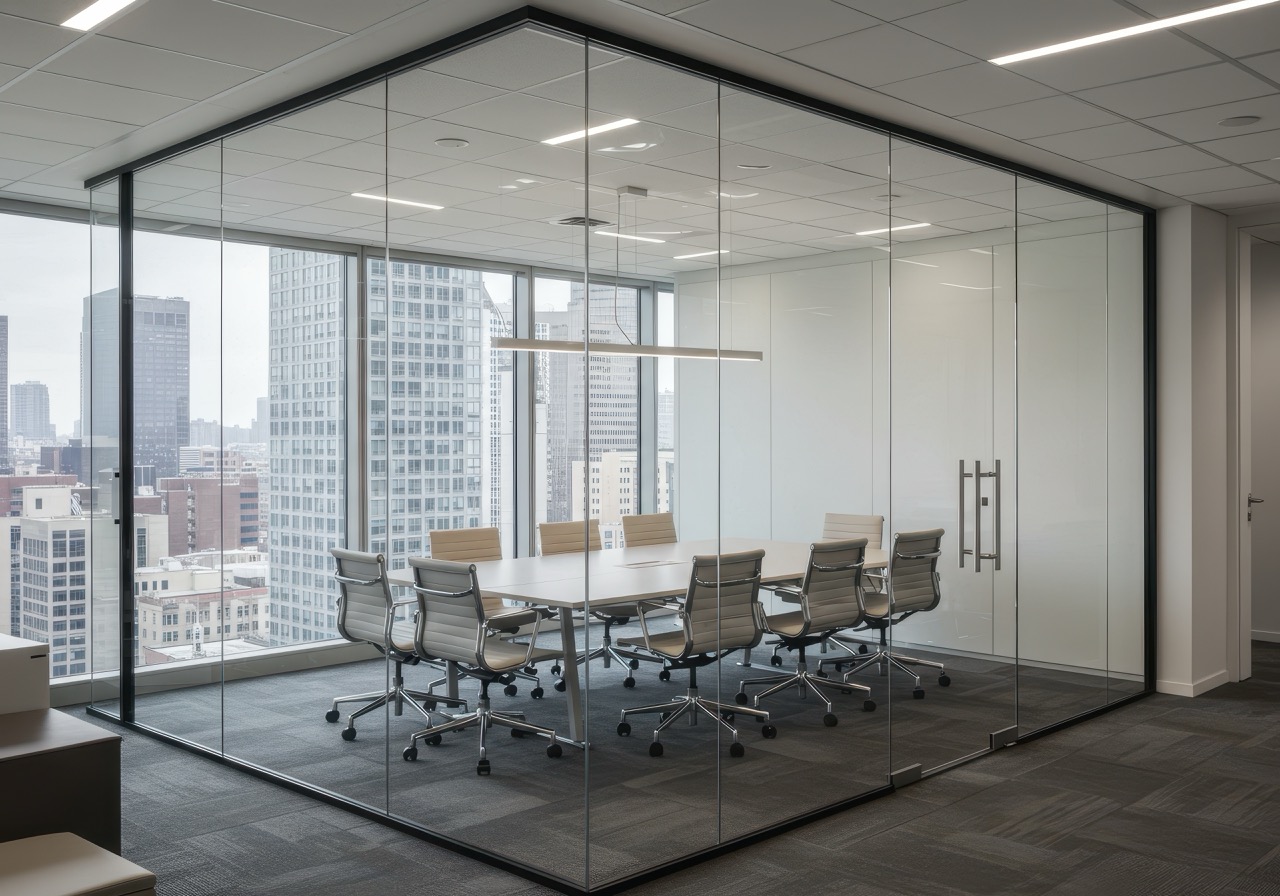We’ve all been there: stuck in a stuffy, poorly lit room, fumbling with a tangled mess of cables, trying to get a presentation to show up on a screen that refuses to cooperate. Insufficient meeting space can kill productivity and drain energy from a great idea. So, if you’re tasked with creating a new Conference Room, let’s talk about how to get it right, building a space that helps your team do their best work.
Design: Set the Vibe Right
Before you consider paint colors or table shapes, ask the most critical question: What is this room’s primary purpose? The layout must match how your team works—brainstorming sessions or client pitches. Keep pathways clear and ensure enough space for folks to move without tripping over cords or chairs.
A space designed for high-stakes client presentations will have very different needs than one meant for creative brainstorming. For formal meetings, a classic boardroom layout with a long table focuses attention on a single speaker and a central screen, projecting authority and clarity. If collaboration is key, consider a U-shaped layout or flexible, modular tables and chairs that can be easily reconfigured for group work and open discussion. A U-shaped table setup is excellent for smaller groups, letting everyone see each other and the presenter, and it is perfect for interactive meetings. For bigger crews, try a modular setup with movable tables so you can switch from a boardroom to breakout groups in minutes.
Think of the room as a tool, and choose the right tool for the job. A brainstorming room thrives with floor-to-ceiling whiteboards or digital smartboards, while a room for confidential discussions might need better soundproofing. Sometimes, a one-size-fits-all approach doesn’t work. Defining the room’s function is the foundation for every other decision you make. This strategic thinking is essential for creating a space that doesn’t just look good but performs brilliantly.
Layout: Make It Work for Everyone
Let’s be honest: Technology is where most conference rooms fail spectacularly. A conference room that doesn’t work is just a fancy closet. Invest in solid tech—think high-quality video conferencing with clear audio and a big screen, since 63% of workers now expect hybrid meeting capabilities.
The goal is seamless integration—the tech should be so intuitive that you forget it’s even there. Start with a high-resolution display, simple wireless screen sharing, and crystal-clear audio. These are non-negotiables in a conference room. For hybrid meetings, a high-quality camera with a wide-angle lens and intelligent framing is no longer a luxury; it’s necessary to ensure remote participants feel included.
The key is to eliminate friction. End the nightmare of dongles by investing in a universal, one-click connectivity solution. A central control panel that manages lighting, blinds, and AV with a single touch can make starting a meeting effortless. As a great article in the Harvard Business Review points out, the success of modern meetings hinges on technology that empowers, rather than frustrates, both in-person and remote attendees.
Function: Comfort is Key
People must spend time in this room, so their comfort is paramount. Uncomfortable chairs are a notorious focus-killer, so invest in ergonomic seating to support people through extended sessions. Ergonomic chairs and adjustable tables keep everyone comfy during long sessions.
Lighting also plays a huge role; opt for adjustable, layered lighting that can be brightened for active work and dimmed for presentations, and always maximize natural light where possible to boost mood and energy. Natural light is a game-changer—big windows boost focus and mood, as studies show it can increase productivity by up to 15%. Toss in some plants or a sleek rug to make it feel less like a boardroom and more like a place where ideas flow.
Don’t overlook acoustics. An echoey room makes it hard to hear, especially on calls. Soundproofing or panels can kill that annoying echo, making sure everyone’s heard, whether they’re in the room or on a Zoom call. So, consider simple additions like an area rug, acoustic wall panels, or fabric curtains to absorb sound and improve clarity.
Bottom Line
A great conference room invests in your team’s collaboration, creativity, and effectiveness. Build a space where you can discuss and come up with great ideas. Go for neutral colors like soft grays or warm beiges to keep things professional but welcoming, and add a pop of color with art or accent chairs to avoid that sterile office feel.
